
In our series about the flora and fauna of the Galapagos Islands, we will introduce you to another creature typical of the islands now: The Blue-footed Booby.
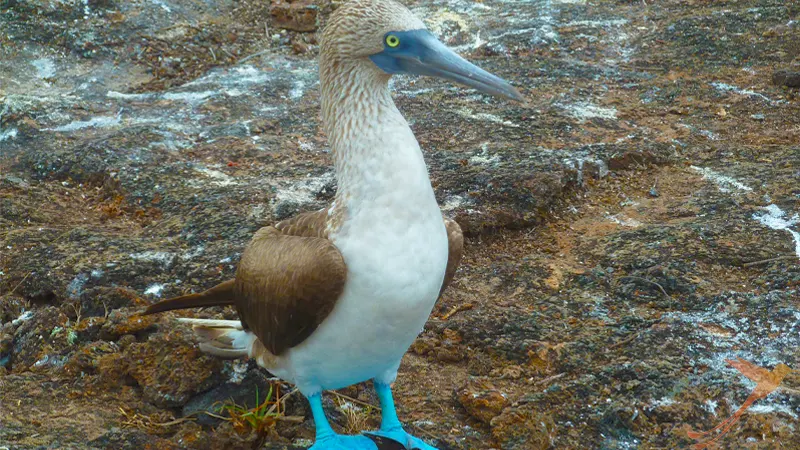
The blue-footed booby is, as the name suggests, known for its blue feet. But not only that, the Blue-footed Booby is also known for the Galapagos Islands, because there are the largest populations in the world. As a tropical seabird, it is also a talented diver and flyer, which is especially useful for catching prey. At about 80 cm long, boobies are about the size of geese, although females are usually larger and heavier. Their weight is about 1.5 kg. The tail and wings are usually long and pointed, with the bill greenish gray and the plumage brownish white, with a darker, spiny-looking head. Even laymen can tell male and female birds apart by their pupils. Females have larger pupils than males, which makes the latter look more threatening. Furthermore, you can tell which one is the female blue booby and which one is the male by their courtship dance. The female gannet watches the male dance and examines it closely to decide if the male is a potential mate or not. So, in summary, the male blue boobies are the ones with the smaller pupils and the birds that dance to impress the other booby of themselves.
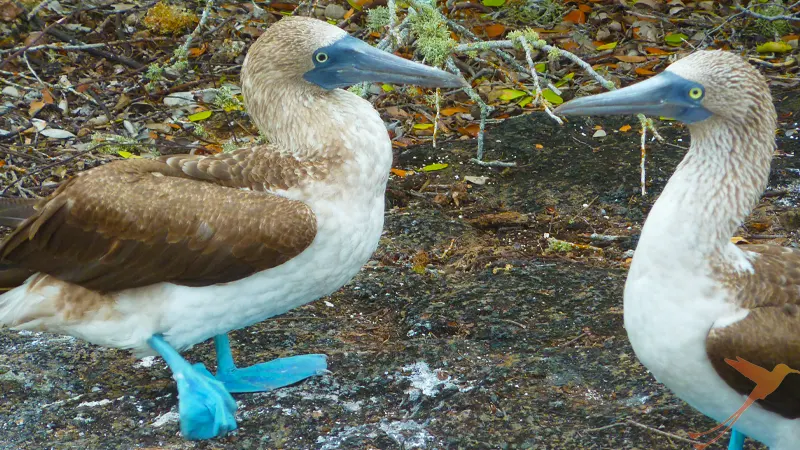
Habitat, Diet and Reproduction
Besides the Galapagos Islands, the species is also found in the Gulf of California, off the west coast of Mexico and on other islands near Ecuador and Peru, but half of all specimens are found in Galapagos. They feed exclusively on fish, for which they dive up to 25 meters deep into the sea. Because of their closed nostrils and the air, they hold during the dive, it is possible for blue-footed boobies to dive into the water without water getting into their lungs. The fish they hunt are pith and anchovies, but mainly sardines. These are responsible for the coloration of their feet. The more sardines the blue-footed booby finds, the more its feet turn blue and the stronger the indication that this is a good hunter. The coloration is due to a special arrangement of collagen fibers, and the carotenoids must be absorbed daily with the food. Already after two days with insufficient food supply the feet lose color. For the female, this means that a blue-footed booby is a good hunter and can therefore provide for her offspring. Therefore, special attention is paid to foot coloration during the courtship dance, i.e., the dance before mating.
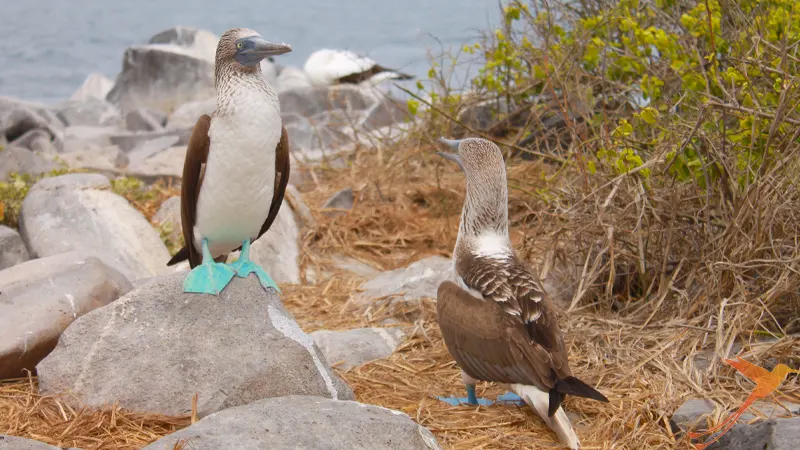
However, courtship behavior is much more complicated and consists of a variety of different rituals. Often, the male presents the soles of his feet during the approach to greet the female or give her small gifts. The male then tries to impress the female with his dance. However, the female observes more than just a dance and blue feet. It also looks closely at the wings and the location of the nesting site, and then judges whether this blue-footed booby is suitable as a mate. If the female is taken with her suitor, she dances together with the blue-footed booby. After mating, the female lays two to three white eggs in the nest within a week. This consists of stones and sticks. White speckles can be seen around the blue-footed booby’s nest, these are the excretions of the bird’s parents, which mark their territory in this way. The two parents incubate the eggs for 40 days. 102 days after hatching, the young leave the nest. At the age of three to four years, they are sexually mature.
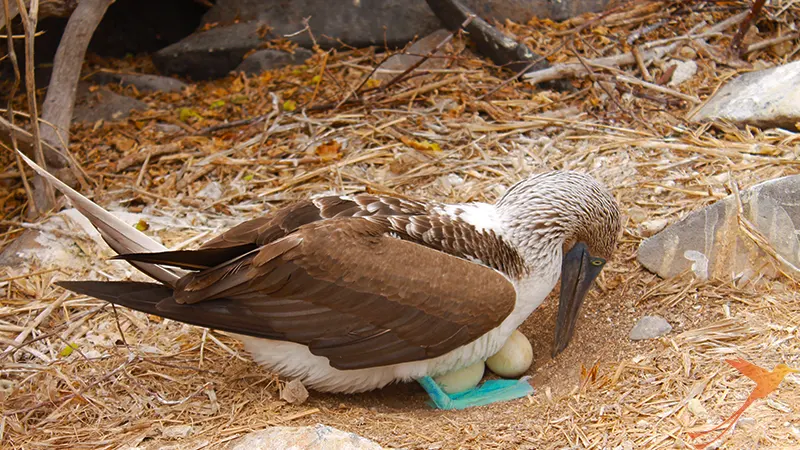
Endangerment
Even though the Blue-footed Booby is not yet listed on the IUCN Red List, the species is considered endangered due to the decline of fish stocks and thus its main food source and should therefore be protected as best as possible. It has already been recorded that the population has drastically decreased in recent years. From formerly 20,000 specimens, only 6,000 of the blue-footed boobies currently live on the Galapagos Islands. In the first place, the tourist is not a danger and can approach the bird at a short distance. Nevertheless, it should be noted that they are wild animals and should be treated with the same respect as any other animal. Boobies can be observed on the Galapagos Islands, but the attempt to feed and approach the birds should be avoided.
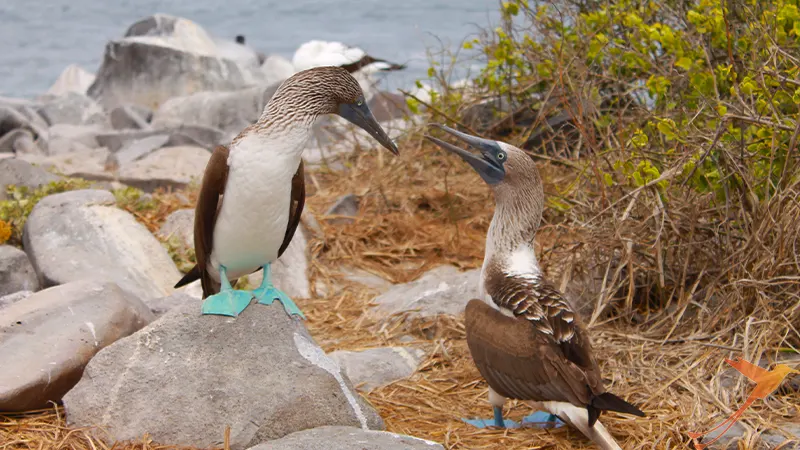
To observe a blue-footed booby, a giant tortoise, a Galapagos sea lion, or different species of iguanas up close and enjoy the incredible flora and ambience of the Galapagos Islands sounds like a dream to you? How good that SOLEQ.travel makes dreams come true, and you can come with us on an amazing trip. So, what are you waiting for? Come with us to the unique Galapagos Islands, watch courtship dances of blue-footed boobies and many more fantastic animals you have not seen before!







